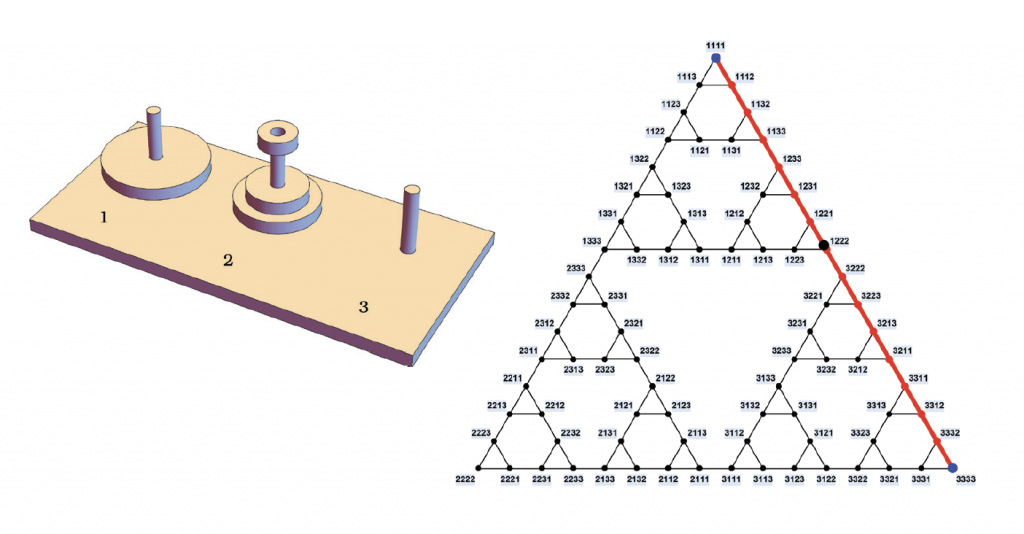

It is used to demonstrate the simple rules to solve a problem and lead to exponential number of steps. Lucas proved that, for any number n of discs, the minimum number of moves is given by the formula 2 n − 1. Tower Of Hanoi (TOH) is a mathematical puzzle which can be easily solved by recursive algorithm. The minimal number of moves required to solve a Tower of Hanoi puzzle is 2 n - 1, where n is the number of disks. That is, we will write a recursive function that takes as a parameter the disk. Solving this recur- rence relation yields the desired formula. With 3 disks, the puzzle can be solved in 7 moves. In our Towers of Hanoi solution, we recurse on the largest disk to be moved. represents a solution to the original Towers of Hanoi puzzle. So the formula for finding the number of steps it takes to transfer N disks from post A to post B is: 2n - 1. The puzzle is of ancient (possibly Indian) origin but was rediscovered by the French mathematician Edouard Lucas (1842–91) and marketed as a toy in 1883. A few rules that need to be followed for Tower of Hanoi are -. 3 Comments 1 Solution 4423 Views Last Modified. The problem is to move the tower of disks over to one of the other pegs in the smallest number of moves, moving one disc at a time and using the third peg as a temporary way station as required, and never placing a larger disc on top of a smaller one. A logical puzzle, frequently studied in cognitive psychology and used as a test of problem-solving ability, consisting of three pegs, on one of which are placed a number of discs of varying diameter, the largest at the bottom and the smallest at the top (see illustration). What is the formula for Tower of Hanoi The original Tower of Hanoi puzzle, invented by the French mathematician Edouard Lucas in 1883, spans base 2.


 0 kommentar(er)
0 kommentar(er)
